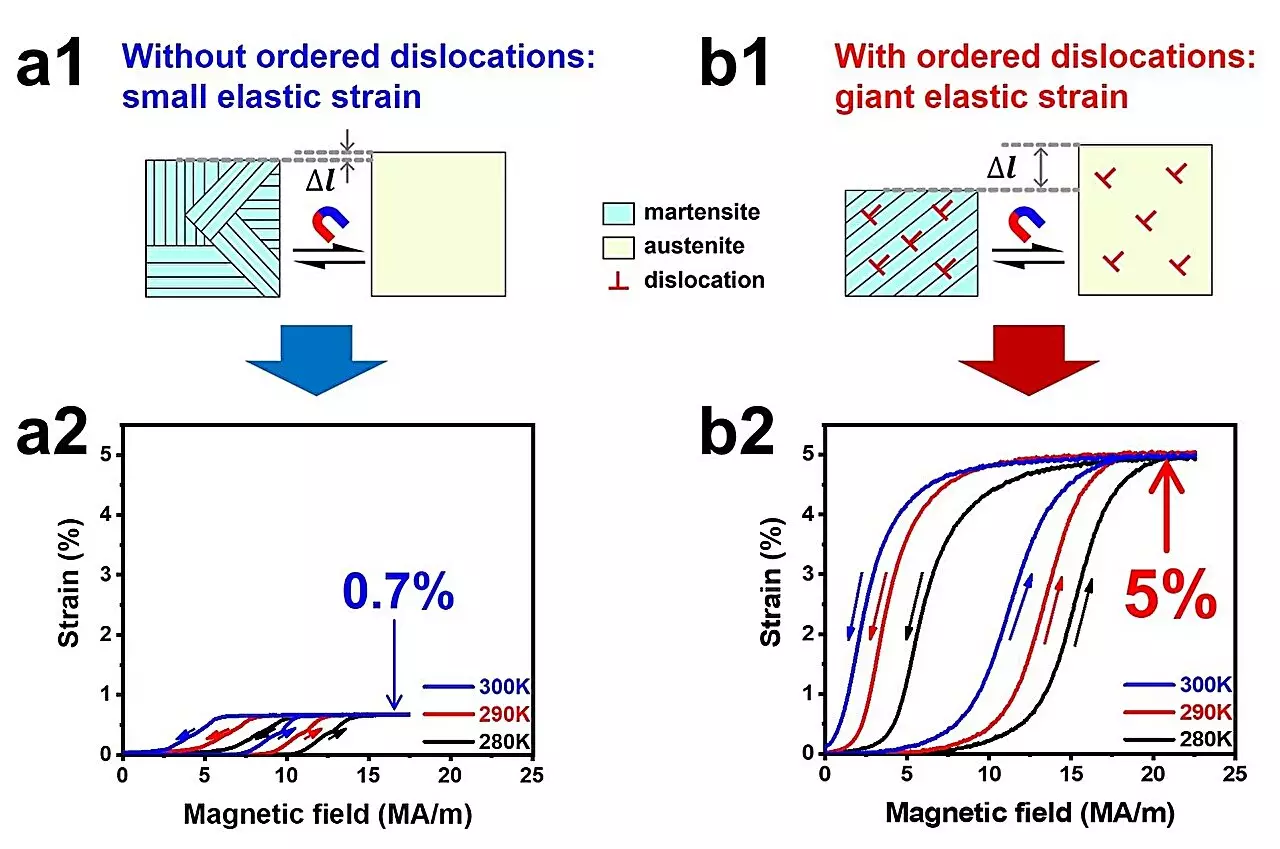A groundbreaking development in the field of materials science has recently surfaced, showcasing a remarkable achievement of a 5% giant magneto-superelasticity in a Ni34Co8Cu8Mn36Ga14 single crystal. This advancement was made possible through the introduction of arrays of ordered dislocations, resulting in the formation of preferentially oriented martensitic variants during the magnetically induced reverse martensitic transformation. The findings from this innovative research have been documented in the prestigious journal, Advanced Science.
Elasticity, which refers to the ability of materials to revert to their original shape after deformation, is a fundamental property observed in various substances, with most metals exhibiting a strain of 0.2%. However, the realm of superelasticity widens when exploring shape memory and high entropy alloys, which can showcase strains of several percent, typically triggered by external stresses. Magneto-superelasticity, fueled by a magnetic field, holds immense importance in facilitating contactless material operation, paving the way for the development of new large stroke actuators, and efficient energy transducers.
The Research Endeavor
A collaborative effort between researchers from the High Magnetic Field Laboratory at the Hefei Institutes of Physical Science of the Chinese Academy of Sciences and Prof. Jiang Chengbao and Prof. Wang Jingmin from the School of Materials Science and Engineering at Beihang University spearheaded the insightful study. By subjecting the Ni34Co8Cu8Mn36Ga14 single crystal to stress-constrained transition cycling (SCTC) training through the application of compressive stress, the team successfully introduced ordered dislocations with a specific orientation. This strategic process influenced the evolution of distinct martensitic variants during the reversible transformation triggered by a magnetic field.
The integration of reversible martensitic transformation with the preferential orientation of the martensitic variants led to the extraordinary achievement of a 5% giant magneto-superelasticity in the single crystal. Furthermore, a device leveraging a pulsed magnetic field was devised with this exceptional material. Operating at room temperature with a pulse width of 10 ms, the device showcased a substantial stroke, courtesy of the giant magneto-superelasticity. In practical applications, it demonstrated a swift response to an 8 ms pulse with a minimal delay of approximately 0.1 ms.
In closing, Prof. Wang emphasized the profound impact of this research by stating, “Our work provides an attractive strategy to access high-performance functional materials through defect engineering.” This breakthrough not only sheds light on the realm of magneto-superelasticity but also opens doors to a new era of advanced functional materials with unparalleled capabilities.



Leave a Reply